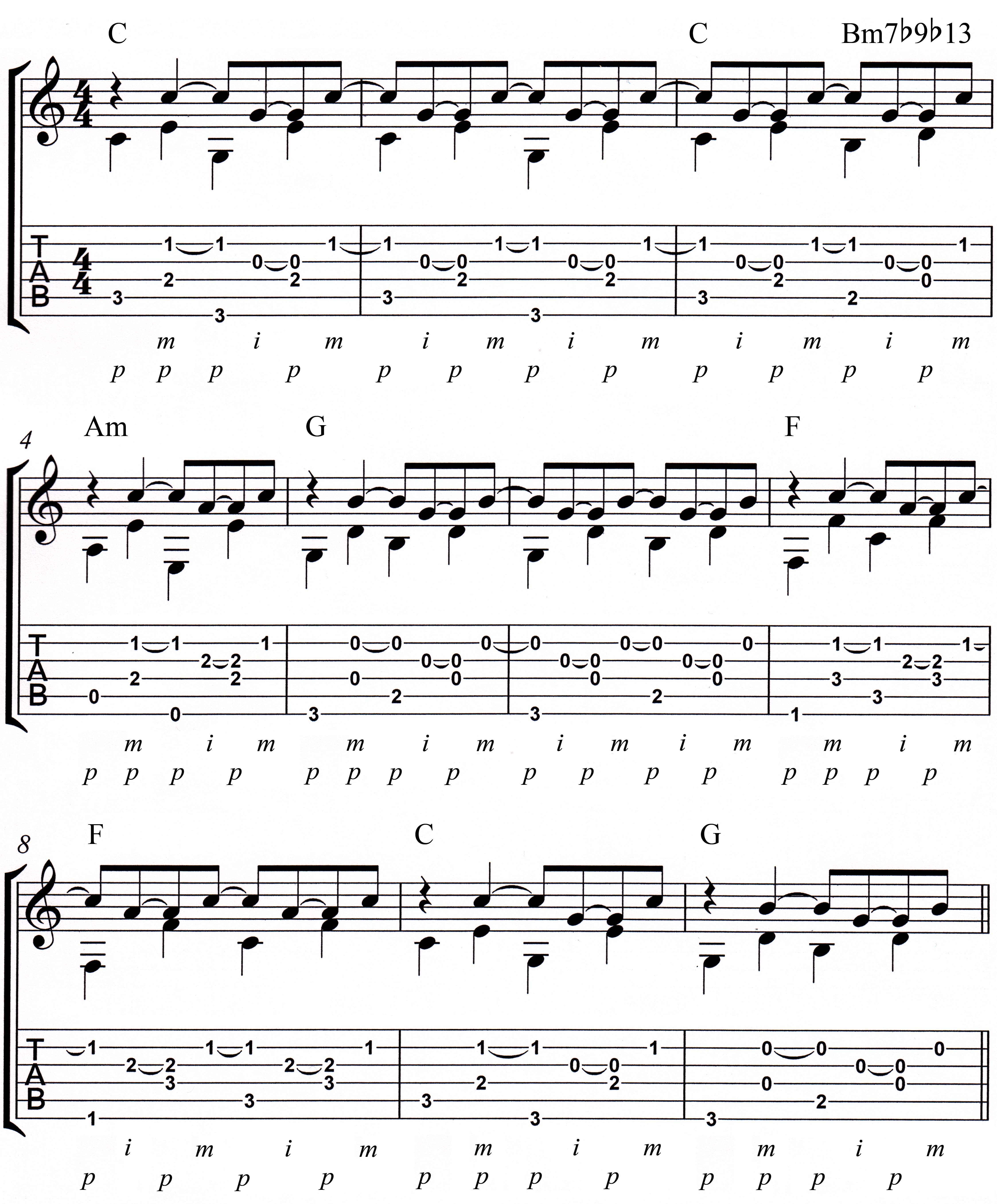
In Part One on Finger Picking, you were introduced to four patterns to help you get comfortable with the idea of fingers on strings
and the potentials this creates to go beyond merely strumming and flailing away with lead playing. One listen to "Sultans Of Swing" by Dire Straits will demonstrate
the power of knowing how to play finger style, even on electric guitar.
In this segment, you'll be presented with more involved patterns that are culled from some actual songs. They will be presented in an increasing order of difficulty
and may require some time to master, to play smooth and even. But they aren't going to be hard. No Blind Blake here (though that kind of finger style playing will
be covered in another area on the site).
As with anything new, do not attempt to play these patterns fast. Slow down and get the mechanics figured out first. Then, still at the slow tempo, smooth out the flow
of the rhythmic syncopation. Once done, you can add speed incrementally, but no more than you can preserve the now learned techniques and mechanics to keep the
integrity of what you are doing intact. Shortcuts are not an option here. You'll only hurt your progress, making it much harder than it needs to be.
In the first example, we'll be outlining the picking pattern used in "The Boxer", by Simon and Garfunkel. Stories float about that Paul Simon changes up the pattern
and is not particularly consistent with how he plays this. Regardless, the pattern you'll learn here is appropriate to the song, pretty typical of the time, and
a standard motif in folk music circles. That makes it an essential pattern to know how to play, employing alternating bass. It's a bit tricky to get your fingers
to work together, but once you work it out, getting it up to speed will be pretty easy. So take your time, play it slow and smooth it out before speeding up.

The second example is from Francesca Battistelli's "A Hundred More Years". While the picking pattern is functionally identical to "The Boxer" motif, the challenge here is the chord movement, especially for those who are relatively new to the guitar.
NOTE: Be careful - This song employs a capo at the 2nd fret. Because of that, the chords are included for clarity; therefore the chords are the actual chords in key, not just the "form", or fingering. You'll play the F♯ like an E, but it's still an F♯, and so called an F♯ in the transcription. So do not let the TAB confuse you - the numbers are the actual fret, not that many frets "above" the capo, as some transcriptions do.
Note also that the progression is not "complete", but the pattern, the flow of the chords, is correct as a guide to playing the song. Listen to the tune itself to
nail down the correct duration of each chord. Picking hand finger order is shown as needed. Be patient, learn the pattern, and you will have accomplished quite a
feat!
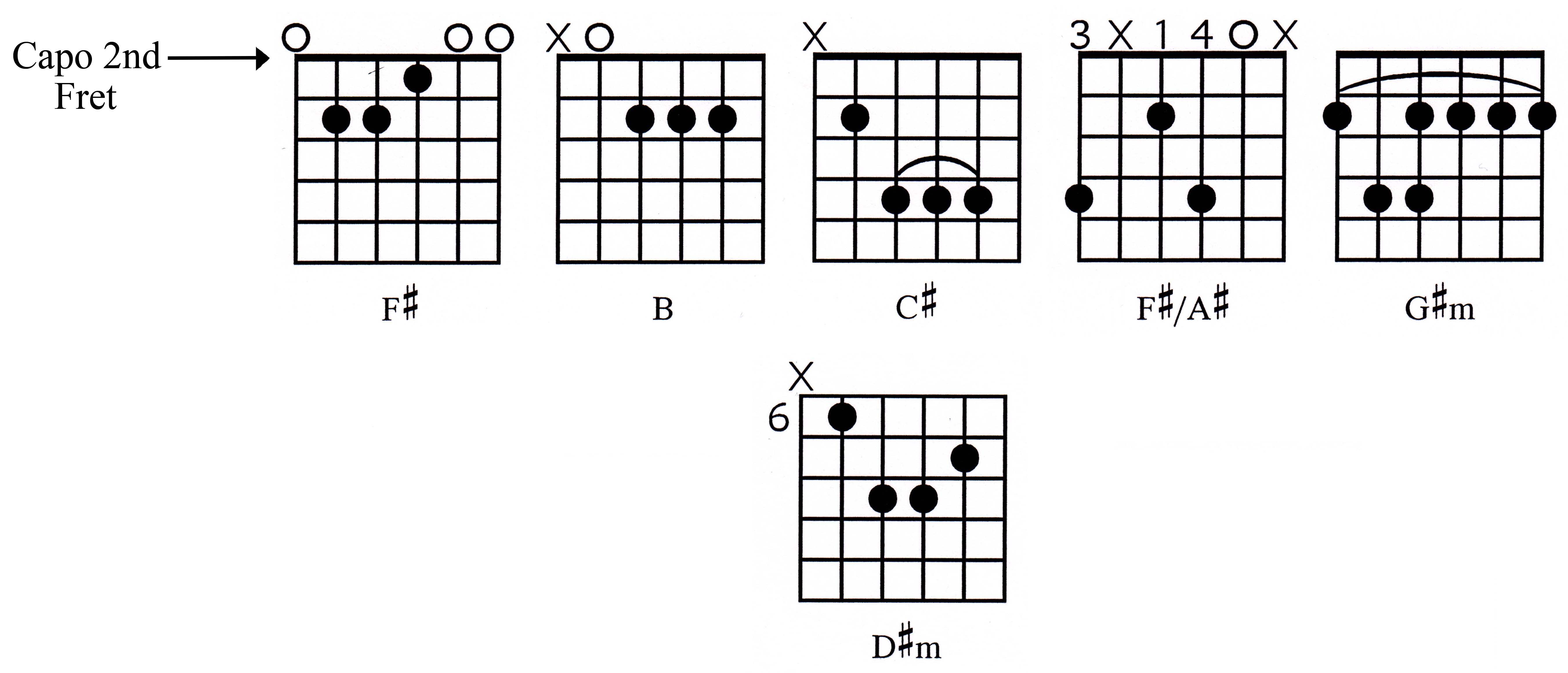
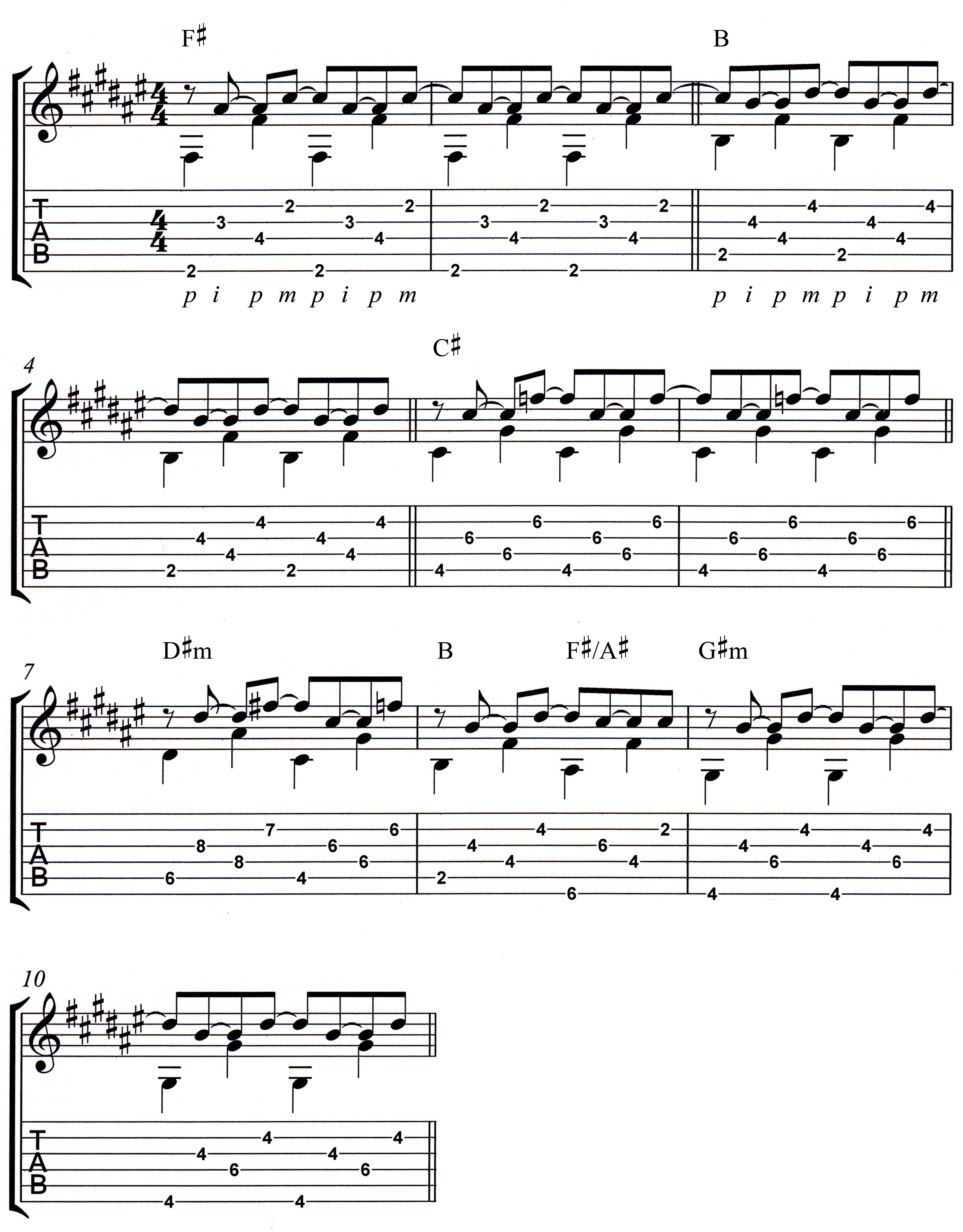
In the third example, we're offering a classic bit by Harry Nilsson, "Lime & The Cocoanut". It's a single pattern, played with a single chord, a C7. That's the whole song. It can twist you in knots if you don't get the timing right. This employs the "backward" picking pattern, an example of which was featured in Part One.
This song is an example of the power of the Story, where the music is simply an adornment to give motion to the narrative, and a bit of lilting melodic support to
the lyric.
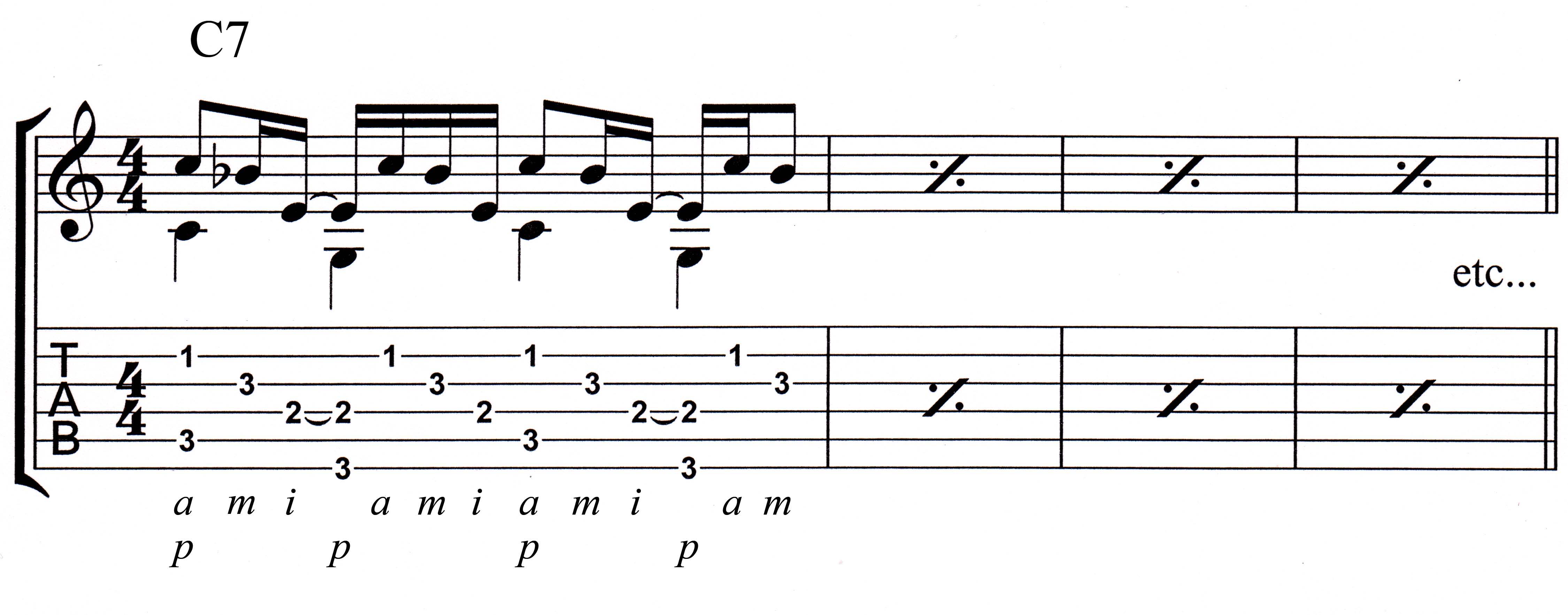
The final example is a bit more of a finger twister, but not all that difficult to master once you get it. This is the beginning of "Puff The Magic Dragon", a classic
folk piece, by Peter, Paul & Mary. It also employs the "backward" picking approach. For the rest of the song, the picking pattern is pretty consistent to what you
are learning here.
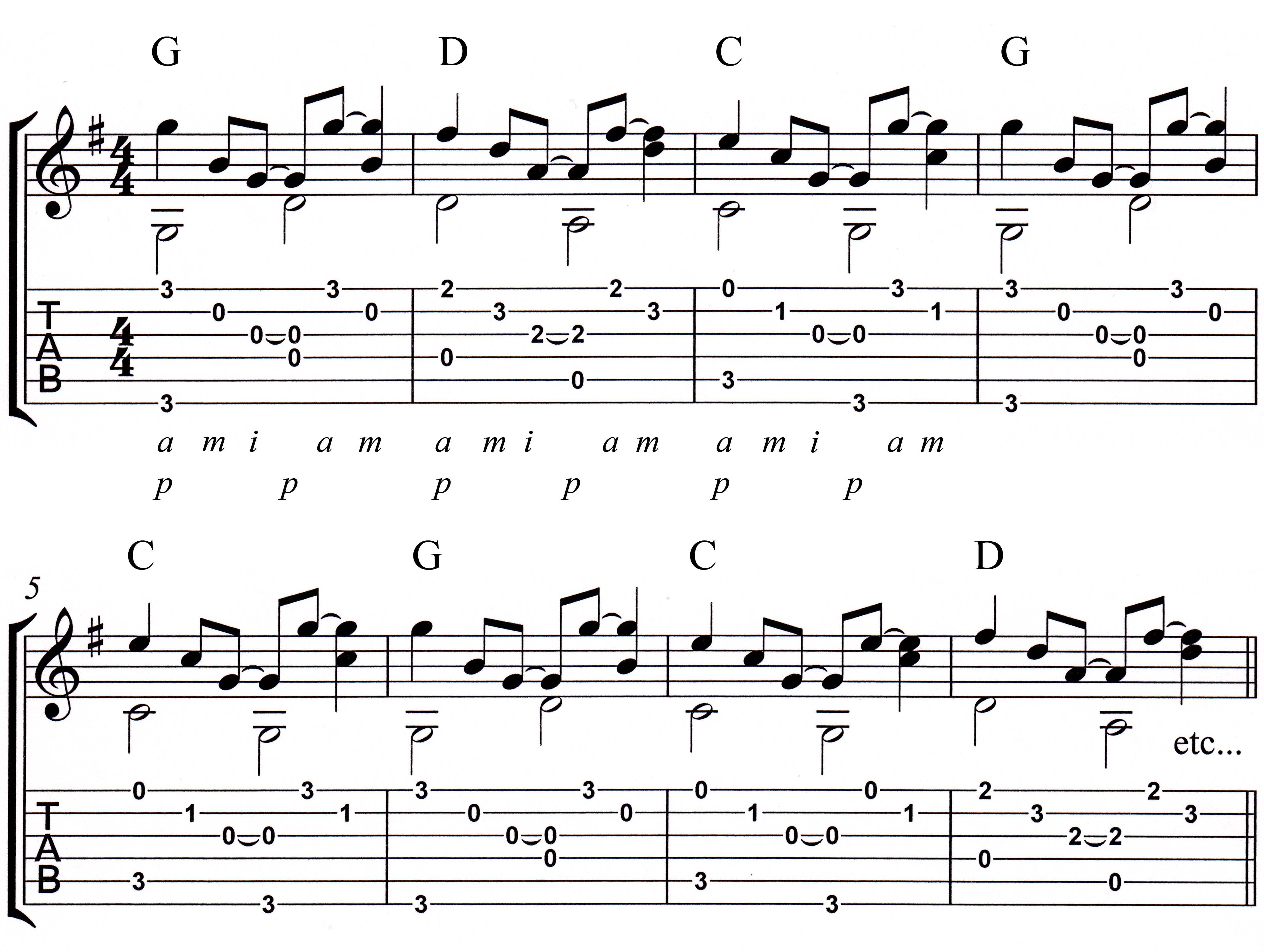
There are countless variations on the picking patterns we have outlined over these two lessons. This has merely been an introduction to the form, showing you the possibilities it holds as often the better approach to a song than strumming the chords. It gives you another flavour to employ, and helps to show you as a more accomplished player, even a "student" of the instrument.
Well, we're all "students", even after many years of playing. There's always more to learn!
Okay, now shut off your computer and go play with some ideas.
See you next time.